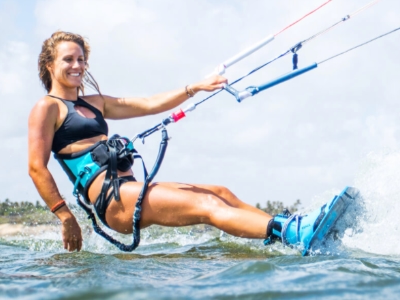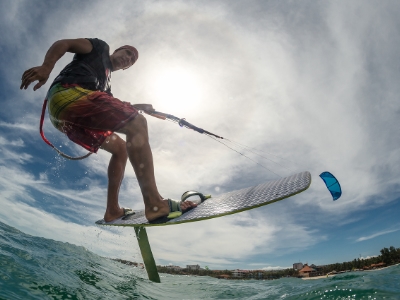WINDSURFING RULES OF THE WATER
1. Starboard (right) has right of way over Port (left) and must maintain course, i.e. don’t swerve. If your right hand is closest to the mast, then you are sailing starboard -Yell” Starboard” If your left hand is closest to the mast, then you are sailing port2. Overtaking vessels must yield. If you are sailing behind someone it is your responsibility to steer sail around them at a safe distance, as they are unable to see you.
3. When on the same reach the downwind sailor has the right of way. A capsized sailor has the right of way over an upright sailor! Give them plenty of room (at least 25 ft).
4. Don’t Jibe into another sailor
5. Non-motorized vessels have right of way over motorized vessels (Unless it is a commercial vessel).
6. Commercial vessels have the right of way over everyone. It is the Windsurfer’s responsibility to keep clear of commercial vessels including barges. Most vessels cause suction from their propellers and create stern wakes.
Safety tips for Windsurfing
- Wetsuits or drysuits are recommended to provide flotation and warmth.
- Wearing life jackets is strongly encouraged by the Minnesota State Marine Board. Specially designed life jackets that incorporate a harness have been approved by the U.S. Coast Guard.
- If your board is larger than 9 ft. it must be registered with the state. Not expensive, rarely checked, though the ticket is costly and can ruin your day.
- Helmets and footwear are also advised.
- Self Rescue is Mandatory. If water conditions are too rough to sail, or if you suffer equipment failure, you may have to de-rig and paddle in. Be sure to roll your sail tightly around the mast. Center the furled mast and boom on the board, lie on the board and paddle to shore. Your board is a flotation device; in an emergency hang on to the board and ditch your rig if necessary. To alert someone that you are having difficulty, use a two-handed wave over your head.
- Don’t sail to exhaustion.
- Equip your rig with an uphaul or extra line for emergencies.
- Never sail alone, and be sure to have a rescue plan. The current or wind can carry you and your board a long distance. Be sure your sailing friends will pick you up should you get into trouble.
- Note the equipment and sail size other sailors are using.
- Remember, the wind conditions on shore are usually lighter than on the water.
- Familiarize yourself with hypothermia.
- Wind chill factor even on a mild day can be dangerous.
- Watch out for other sailors.
- Provide help if you can, and alert others for assistance.
- Respect others enjoying the water for swimming, boating, fishing, etc. They have as much right to be there as you.
- Respect private land adjacent to public launch sites.
- If you must scream and yell and cuss about something, go to your car, get inside, roll up the windows and then go ahead.
( original text from windance.com)
KITESURFING WING-SURFING
FOILING
SNOWKITING
SUMMER & WINTER LESSONS
Stay informed with our specials and local news.Follow us on social media @lakawamn
Book your wind sport lessons here!
KITESURFING

BOOK IT!
FOILING

BOOK IT!
WING SURFING

BOOK IT!
SNOWKITING

BOOK IT!










